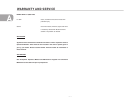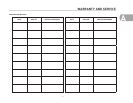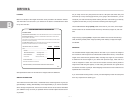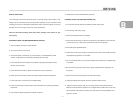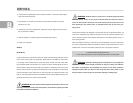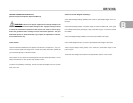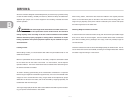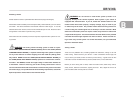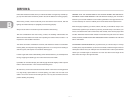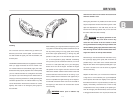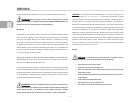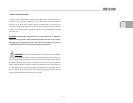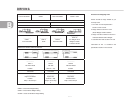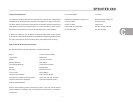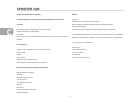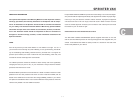
B
DRIVING
B - 7
If the trailer has electric brakes, start your vehicle and trailer moving slowly, and then ap-
ply only the trailer brake controller by hand to be sure the brakes are working properly.
When towing a trailer, check occasionally to be sure that the load is secure, and that
lighting and trailer brakes (if so equipped) are functioning properly.
Always secure items in the trailer to prevent load shifts while driving.
Take into consideration that when towing a trailer, the handling characteristics are
different and less stable from those when operating the vehicle without a trailer. It is
important to avoid sudden maneuvers.
The vehicle and trailer combination is heavier, and therefore is limited in acceleration
inclining ability, and requires longer stopping distances. It is more prone to reacting to
side wind gusts, and requires more sensitive steering input.
In order to gain skill and an understanding of the vehicles behavior, you should practice
turning, stopping and backing up in an area which is free from traffic.
If possible, do not brake abruptly, but rather engage the brake slightly at first to permit
trailer to activate its brake. Then increase the braking force.
We want every owner to be a safe and courteous driver. A few hours of towing practice
in a large empty supermarket lot will make pulling your trailer over the road much
easier. Line out two corners for left and right turns. You may also use these corners to
practice backing and parking.
OBSERVE THAT THE TRACKS MADE BY THE TRAILER WHEELS ARE DISTINCTLY
DIFFERENT FROM THOSE MADE BY THE TOW VEHICLE. Studying this will make it
easier for you to correct mistakes. Truck or trailer type fender or door grip rear view mir-
rors are necessary for maximum visibility and in most states the law requires them.
After thoroughly inspecting your hitch, brakes, and tires you should be ready to tow.
Check traffic, signal that you are about to pull away, and start slowly. Look often in your
mirrors, and observe the action of the trailer, then carefully move into the proper lane
of traffic. Remember that the trailer wheels will not follow the path of the tow vehicle
wheels; therefore, WIDER TURNS ARE NECESSARY WHEN TURNING TO THE LEFT
OR TO THE RIGHT.
ON FREEWAYS OR EXPRESSWAYS try to pick the lane you want and stay in it. Always
maintain plenty of space between you and the car ahead, at least the length of the tow
vehicle plus trailer for every ten miles per hour. Remember that in order to pass another
vehicle you will need longer to accelerate. You must also allow for the length of the
trailer when returning to the right hand lane.



